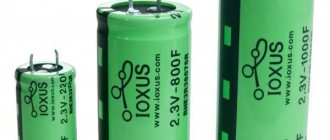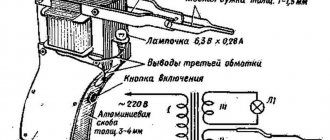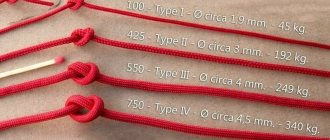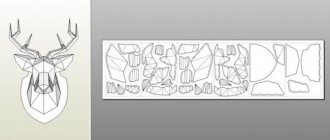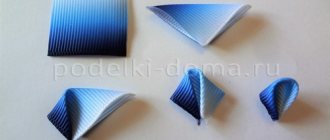5845
In dental practice, doctors use many tools and devices that allow both diagnosis and treatment.
However, many people associate an appointment with a dentist primarily with the characteristic whistling sound of a working drill.
This is in fact not only one of the most important, but also an absolutely irreplaceable tool, without which dental treatment would be difficult and of insufficient quality.
What it is?
A drill is a device that provides movement of the instrument with which dental procedures are performed . The device is rotary - this means that the movements performed are rotational.
The rotation speed of the instruments is high enough to perform many operations performed at dentists of various specializations.
The operating speed of these devices can reach 40 thousand revolutions per minute . Due to this, the sensations experienced by the patient are minimal. He does not feel pain, but many people develop a persistent dislike for the drill.
The fact is that during operation, the drive parts interact with each other, and their interaction generates a sound - whistling and quite high-pitched.
Photo: dental drill
Its tone affects the patient. At the same time, doctors do not experience such sensations, since they hear it constantly, get used to it and stop reacting.
An additional disadvantage and a negative factor influencing the attitude of patients is the vibration that will inevitably arise when working at such a speed, especially since the instrument comes into contact with hard tissues in the oral cavity, which enhances the perception.
Another feature of the operation of this dental apparatus is the rather unpleasant odor that occurs during the preparation of hard tissues . The tool seems to cut off parts of the tissue with fine dust, which is highly volatile.
Due to the high speed of movement, these particles heat up and, when they hit the corresponding receptors in the nose, cause associations with burnt bone. Water is used to cool the working tool, but it cannot completely prevent the spread of tissue particles removed from the tooth.
The best thing a patient who experiences extremely negative sensations just at the sight of a dental drill can do when entering the office is to relax as much as possible.
It must be remembered that all the unpleasant nuances of its operation are just technical features that should be treated like the engine of a running car.
To increase functionality, dental drills can be equipped with additional tools that are used to perform a wide range of operations with the highest precision.
Let's figure out whether pregnant women can have their teeth treated with anesthesia, is there an alternative?
This article presents the average prices for silvering baby teeth.
Here https://www.vash-dentist.ru/lechenie/zubyi/vse-o-mestnoy-anestezii-v-stomatologii.html we provide a list of contraindications to local anesthesia in dentistry.
Teeth in a glass
Most people lose almost all their teeth as they age. There were no prosthetics or nylon implants then. Therefore, people had to wear a hard “overshoe” that was, in principle, not adapted to the oral cavity. There were no fixing gels for prostheses, and the “overshoes” could move freely.
Teeth in a glass
Patients had to glue their dentures even with ordinary glue. At night they had to be removed, washed and stored in a glass. People constantly experienced discomfort, but there was no other alternative in the Soviet Union at that time.
Application
Most often, it is used by therapists when treating cavities damaged by caries, cleaning and grinding hard dental tissues, fillings, and many other manipulations necessary during treatment.
Periodontists also use the drill . With its help, you can quickly and efficiently remove deposits formed on the enamel surface.
Orthopedists also use this device in their work. It may be required to cut bone tissue and smooth it. He can also handle the processing of the bed for the installation of various orthopedic structures, but the most common manipulation is considered to be the preparation of hard dental tissue for various purposes.
Dental technicians also use different types of drills with a wide variety of tips . The properties of these devices turn out to be indispensable in the manufacture of artificial dental crowns and various prostheses.
After fitting, additional processing may be required, which is also carried out using a drill.
Color engraving
To make the drawing look more clear and beautiful, use a glass pencil or ink.
In order for the effect of using these tools to remain as long as possible, the surface is coated with colorless varnish.
You can make the drawing clearer using a needle and oil paints. This set allows you to scratch auxiliary lines of the pattern, which are subsequently covered with paint.
Artistic color engraving allows you to make the product colorful. To do this, those elements that do not need to be painted are coated with transparent varnish.
How to blacken a metal object? Special equipment is not used for this, but the following substances are required: sulfur and potash (potassium carbonate) in a ratio of 1:2.
This composition must be put on fire; to do this, it is poured into a tin can. The mixture must be constantly stirred, and the fire should not be high.
The mixture is removed from the heat when it turns black. Before this, it will need to be ground in a mortar; after the fire, it is also placed in a mortar and ground again (cooled).
Blackening occurs as follows:
- Water is added to the resulting mixture (1:9);
- A brass object is placed in the solution;
- It is heated until the product acquires the desired shade.
You can make the background dark before applying the drawing. In this case, varnish is not needed.
You can make an object brown with your own hands by keeping it in a solution of zinc chloride and copper sulfate with the addition of water (100g, 100g, 200g, respectively).
Hand painting in steel gray color is obtained from 1 liter of water, two grams of ordinary salt and two grams of a mixture of sulfur and potash.
The orange-red color is obtained from a solution of potassium sulphide: 1 gram of the substance per 250 grams of water.
Upon completion of work, the varnish is erased.
The blackening of an object and the blackness we know are two different things. The technique used to create niello is mechanical; it cannot be done with your own hands.
Components
In one form or another, different models and types of dental drills contain several basic design elements that ensure the operation of the entire device and increase its functionality.
- Nozzle .
A direct working tool used for processing fabrics or performing other manipulations. Most often it is a bur, which is used to remove tissue by cutting. Additionally, grinding attachments, discs, etc. with different sizes and other parameters can be used as attachments for the drill. - Tip .
Serves to secure the nozzle, that is, it is an intermediate link for transmitting torque. In dental practice, both straight and bent tips are used. The choice of a specific type depends on the convenience of manipulation, that is, the location of the area requiring treatment, and the characteristics of the clinical picture. - Drive unit .
The most important part of the device, which directly transmits torque to the tools, is a micromotor or turbine, which operate on different principles. It is by the type of drive used that different types of drills will differ. - Shlens .
This part serves to connect the device with the main part - the control unit or a separate dental unit. Its presence allows, if necessary, to place the main part of the structure in a separate room in order to minimize the level of noise generated.
Kinds
The main feature by which different types of dental drills differ is the type of drive used in the design.
Pneumatic
The most commonly used drills are those with a pneumatic or pneumatic turbine drive. Compressed air under high pressure is transmitted from the compressor through a special hose to the turbine tip.
Thanks to the characteristics of the compressor, it was possible to increase the rotation speed of the tip to almost 300 thousand revolutions. Due to this, the doctor has the opportunity to perform very precise treatment with complete painlessness for the patient , and also in less time.
At the same time, pneumatic turbine machines do not have high torque. Because of this, for high-quality work with some filling materials and tissues, other types of devices are used .
Electrical
A more correct name would sound like electromechanical. In rare cases, you can find such machines, the basis of which is a multi-link belt drive, but now they are used very little.
These old, Soviet devices were distinguished by relatively low rotation speeds and patients felt quite strong vibrations during the treatment process, which gave rise to pain during the preparation of hard tooth tissues.
At the moment, this type of drill, used during the USSR, has been replaced by electromechanical ones with a micromotor, which eliminate the listed disadvantages.
The rotation speed can reach 40 thousand revolutions per minute, which is less than that of pneumatic devices. However, there are quite high torque values , which plays an important role for the comfort of both the patient and the specialist.
Devices of this type can be used not only for pre-treatment and preparation of hard tissues and treatment of distant teeth, but also as a tool used for fitting dentures and precision processing of artificial crowns.
The device creates a fairly high noise level, so it is most often installed in a separate room. This also allows you to connect multiple installations to it.
Laser
This is a new generation of devices that do not have a rotational motor at all. Light energy is used as a tool here. Preparation of hard tissues occurs safely, quickly and completely without pain .
However, chemical filling materials cannot be used for filling after using a laser. In this case, fillings are placed only from light-curing materials.
Erbium lasers are most often used to treat hard tissues in dentistry.
A few words need to be said about the components of the laser drill, since its design is somewhat different from those listed:
- base unit – regulates the frequency and power of the light flow;
- foot pedal – switches on/off;
- light guide – directs and transmits the flow of light to the tip;
- tip - performs direct manipulation.
Portable devices
Portable types are incredibly convenient, as they allow you to provide dental care outdoors - in the field, at home, in rural clinics where there is no electrical supply.
The devices are small in size and equipped with a separate power source .
And the use of brushless micromotors, such as in the Forte 200A model, has made it possible to minimize the need to repair faults.
For one of the latest modernizations of a traditional drill, watch the video:
Working with an engraver: “easy and simple”
To ensure that the product, on which the craftsman has to work painstakingly, is not spoiled by an accidental mistake, it is necessary to know the intricacies of using an engraver, be able to accurately copy drawings and follow safety rules. Difficult? Not at all! We will tell you in more detail about all the secrets of working with the tool later in the article.
Stage No. 1. Workplace organization
First of all, you need to properly prepare everything you will need for engraving.
For working with tools, a table with a high-power lamp is best suited - this way all the smallest details will be clearly visible. To avoid damaging the furniture, it must be covered with paper or cloth.
Thanks to this, chips and dust generated during cutting and grinding will remain on the material and not on the surface of the table.
For rough drawing, you should stock up on a pencil or felt-tip pen and adhesive tape - it will come in handy if the pattern has already been drawn on paper.
In this case, the tape will help firmly secure the “draft” to the surface so that it does not move and the pattern is even.
If you intend to depict something directly on glass, plastic or wood, the surface should be “degreased”, that is, wiped with alcohol. This way the felt-tip pen will not wash off, and the drawing will be better visible.
Stage No. 2. Tool preparation
In order not to be distracted by searching for the necessary attachments during the engraving process, it is better to immediately lay them out in the order in which they will be needed during work. At the same time, it is worth understanding the purpose of each part.
For example, a cone-shaped bur bit is designed for cutting outlines and is not suitable for making fine strokes, while a cylindrical bur bit will do the job perfectly.
The engraver always comes with instructions, so you can quickly find out in what case to use the attachments.
Sometimes a special suspension is sold along with the instrument. It is needed not only to give the engraver the correct position during storage.
Thanks to it, it is possible to avoid vibrations that occur during operation, and, consequently, some errors when applying the pattern.
Before you start using the tool, you must install the suspension so that the flexible shaft cord does not get in the way and does not create interference.
Stage No. 3. Drawing
To ensure better hand glide over the surface, you should wear gloves. Thanks to them, the brush will not remain in the same place for a long time. In addition, this will help avoid the appearance of stains on degreased wood or plastic.
For those who are just starting to work with an engraver, experts advise choosing the minimum speed. This way you can simultaneously solve 3 problems: cut the pattern evenly, make strokes of the same depth and not damage the material.
You need to start by drawing the outline itself and only then move on to “drawing” the details - small lines, dots, etc. In order to give the image a finished look, you should use the roller with a soft felt surface included with the engraver. Using this part, you can remove all roughness and “burrs” left by the carver.
When working with an engraver, you should always remember that every 10-15 minutes you will have to stop and turn off the tool (if its design does not include a cooling system). This way you can avoid engine overheating and premature breakdown. More precise times for each model can be found separately in the attached instructions.
Stage No. 4. Equipment care
In order for the engraver to serve properly for many years, you need to constantly monitor the condition of the working elements.
If, upon inspection of diamond wheels, brushes or attachments, cracks, roughness or other damage are found on them, these parts must be replaced with others.
It is worth remembering that new consumables must be of the same brand as the tool itself. Only in this case the manufacturer guarantees the efficiency of the engraver and its long service life.
The second thing you need to do every time you finish painting is to clean the ventilation holes. They serve for additional cooling of the engine, but over time they become clogged with dust generated when cutting wood, plastic or glass. Contamination reduces the productivity of the engraver and often causes its failure.
To prevent this from happening, you need to carefully remove the abrasive using a piece of cloth soaked in warm water or soapy water. It is not recommended to use alcohol-containing products, solvents and gasoline, as they can damage the body of the instrument.
It is typically made from ABS plastic or polystyrene, which are susceptible to chemical attack.
Based on this information, you can organize your work with the engraver step by step so that it is effective, reliable and enjoyable. However, this only applies to those cases when the tool is used to apply patterns. Otherwise, when cutting various materials, grinding surfaces, or drilling holes, you should follow the safety rules:
- before turning on the engraver, you must make sure that the power cord is in good condition and check the operating parts for damage;
- To protect your eyes from dust and random sparks, you must use glasses;
- during heavy work (drilling, milling), the engraver must be held firmly with the fingers of the entire hand - this eliminates the risk of arbitrary movements that can lead to failure of the equipment;
- If the cutting disc suddenly jams, do not try to immediately remove it from the hole. In such cases, you need to turn off the power supply, wait until the nozzle stops rotating, and carefully pull the engraver out of the cut;
- After completion of work, all used nozzles must be cleaned of accumulated dust. By servicing the engraver on time, you can not only extend its service life, but also improve the quality of work with it;
- consumables purchased separately (wire brushes, diamond discs, etc.) must exactly match the technical characteristics of the tool, have the appropriate shank dimensions, thickness and speed.
Apply these simple tips when completing orders and you will get excellent results. And if you don’t already have one, you can always choose a suitable engraver in the catalog on the website of our online store.
What does the price depend on?
You can trace the dependence of the price of a dental drill on a wide variety of factors , some of which are related only to the general laws of the market.
Among them:
- fluctuations in foreign currency exchange rates;
- choice of domestic or foreign manufacturer (an inevitable increase in cost due to transport costs);
- seller’s pricing policy (markups, discounts, promotions, etc.);
- buying a new or used device;
- the region in which the purchase is made, and much more.
The main factor influencing the cost is the specific type of installation being purchased. At the same time, among the same type of machine there may also be different prices, which in this case reflect differences in characteristics - power, additional functions, and so on.
Speaking about a specific numerical expression of price, we can give the average cost for individual types of drills :
- pneumatic - about 28-32 thousand rubles;
- electromechanical – 23-25 thousand;
- combined devices - 55-60 thousand;
- laser - more than 1 million rubles;
- portable - about 7-10 thousand.
Let's find out whether it hurts to remove a wisdom tooth, how necessary is this procedure?
In the next publication we will tell you what drugs are used for conduction anesthesia in dentistry.
Here https://www.vash-dentist.ru/lechenie/zubyi/emal/giperesteziya-simptomyi-raznovidnosti-terapiya.html we will talk about the features of the manifestation of hyperesthesia of dental enamel.
Below is the estimated price at which you can buy some models from different manufacturers.
- Selena-2000 (portable, electric) – about 24 thousand.
- RESTAR-03 (portable electric) – 17 thousand.
- Marathon N7 (portable electric) – 9,500 rubles;
- BPS 300/40-TECH (pneumatic, stationary on a stand) depending on additional equipment - from 17 to 25 thousand.
- BPK-01M (BPK-02/01) (pneumatic, stationary, has a built-in compressor) - 32-35 thousand.
- Mobilico MBD-110 (portable, combined) – 67-70 thousand.
- Waterlase C-100 Biolase (hydrokinetic laser for hard and soft tissues) – 1.2 million rubles.
Many people hate and fear going to the dentist. By learning more about one of the most important tools in dental practice, the drill, they can get rid of this aversion.
And regular preventive visits to the doctor will help prevent many problems with the teeth and the entire oral cavity.
If you find an error, please select a piece of text and press Ctrl+Enter.
Tags: treatment, operations in dentistry
Did you like the article? stay tuned
Previous article
What are dental consumables?
Next article
Why is it necessary to install a gum former?
